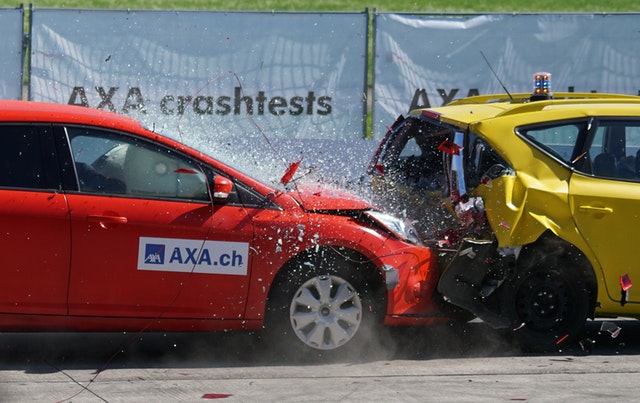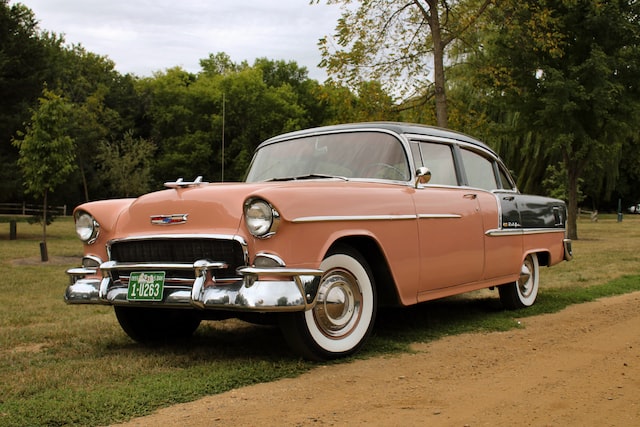Most of the states in the US are 17-18 years old, this is exactly the right age to take the driving test here. But there are also some states in the US that also allow children from 16 years old to take the driving test for a car, but on the condition that they have a relative or guardian sitting next to them, and there is a time limit.
Before reading the following article on “How to drive a car?”, make sure you are old enough to be allowed to drive. In case you are qualified to drive, let’s follow these safe driving tips for beginners.

Learning how to drive a car for the first time
Almost everyone who is behind the wheel for the first time driving is surprised when operating, as well as not familiar with how to obey traffic laws. Let’s point out these driving tips for beginners to feel secure when participating in traffic.
- Get used to the operation on the car
Sitting posture
- Adjust your sitting position: Place your entire body close to the seat. Absolutely do not leave the distance, avoid fatigue, back pain when traveling long distances.
- Adjust the sitting distance: Adjust the seat position to suit your leg length, do not let your legs stretch when driving, and do not let your knees rub to impact anything on the car.
- Gas pedal position: The left foot always holds the clutch (if any), the right footholds the accelerator. When you want to switch from the accelerator to the brake, do not lift your whole foot, but use a V-shaped ankle rotation, the heel must always stay in one position.
Adjust the steering wheel
- Adjust the height of the steering wheel so that the face of the steering wheel is parallel to the driver’s eyes, and at the same time, do not let the steering wheel obscure the display dashboard. The steering wheel should be placed at 9 o’clock and 3 o’clock, the left (or right) hand should always be kept at the horn position.
- The most suitable steering wheel distance is 25-30 cm (10 inches) from the driver’s shoulder. At the same time, let the driver’s hand angle about 120 degrees.
- Should use pulling force to steer the steering wheel when moving. Do not use hand force to push completely. For example, if you want to steer to the right, you should use your right hand to pull the steering wheel, and at the same time use your left hand to assist in thrust. Using this way, the driver does not lose strength when he has to steer continuously.
- Adjust the seat height so that the driver has the best view. Using a small object placed in front of the vehicle at a distance of about 5m, the driver must clearly see the position of the object from the seat position.
Adjust the rearview mirror
The right rearview mirror should be adjusted so that it can cover about ¾ to the right and ¼ to the body of the vehicle. At the same time, remember to adjust the middle rearview mirror so that the entire rearview mirror can be covered. If possible, you should equip a convex mirror to remove blind spots.
- Buy car insurance
Car insurance covers expenses in the event of an accident or injury. The law requires all cars to have basic insurance, in case the driver causes injury or damage to others. You can also purchase insurance to cover the cost of damage to your own vehicle, or in the event of a vehicle being stolen. You must have at least basic car insurance to legally drive. Even when driving a friend’s car, it’s your responsibility to make sure that the vehicle is insured. Insurance documents should be kept in the car to show the police if you are stopped.
- Always drive at a moderate speed
You are a new driver, so perhaps you are not familiar with the control positions on the car, or when you encounter an unexpected situation, you cannot handle it. New drivers should not accelerate suddenly, go at high speed or stop suddenly. All of these are very dangerous. Practice precise driving skills at low speeds, then gradually increase your speed. What is especially important when driving is how you go to be safe, not how fast you go.
- Keep a safe distance from other vehicles
Practice reading the distance by finding a road that is empty of traffic, and then asking someone to signal you, practice approaching and stopping before colliding with another vehicle. Feel and measure the safe distance between your car and the cars in front to avoid unfortunate collisions. Keep in mind that every car has a very different front end, so feeling the distance ahead is essential when driving a strange vehicle. Keeping a safe distance is important to keep yourself and others safe.
- Keep an eye on the rearview mirror
When you’re new to driving, you can often forget to regularly check the rearview mirror and only pay attention to the front. Observing the rearview mirror not only helps you avoid situations that new drivers often encounter such as crossing other cars, slamming the side of the car into the roadside, or being blocked, but also dangerous when you’re backing up, don’t turn around. Or stick your head out to reverse, but practice the skill of looking in the mirror and backing correctly.
- Keep strong mentality
Traffic is becoming more and more complicated, sometimes you will encounter uncomfortable situations, helpless on the road or while driving while thinking about other things. Put those things away and take traffic more seriously, focusing on safe driving to avoid causing unwanted unfortunate situations. Should pay attention to read signs when on the road, through junctions, intersections so as not to violate the Traffic Law.
Read more >> Rules Of The Road In the U.S That You Should Know
- Run in the right lane
Pay close attention to the lane markings. This is very important when participating in traffic, as we often encounter priority lanes for cars to turn left (or right). For roads with 3 or more lanes for cars, most of them will have signal lights specifically for left-turning vehicles. When facing this situation, if we want to go straight, we must go in the middle lane.
- Always look at the sign
Get in the habit of looking at every traffic sign on the road, if you don’t want to constantly pay fines to the traffic police. Speed limiting signs, signs prohibiting cars, prohibiting parking, signs allowing right turn when there is a red light …, all need you to observe so that you can not break the law. Do not follow tall vehicles such as trucks, buses, you will lose all visibility and observation of the sea.
- Pay attention to vehicle signals
Drive to the side of the road quickly if a police car, fire truck, or ambulance blares its siren signaling it should overtake you. You should be aware that when a school bus (usually painted yellow and clearly marked) is in the process of picking up or dropping off passengers, all vehicle traffic must stop. This is one of the very strict regulations in the US. When the bus is stopped there will be a big STOP sign and the flash will flash. At this point, you have to stop the bus and wait for the bus to finish. Regulations in each state may be slightly different, such as how far from the bus you must stop and other details. So it’s best to find out the regulations in the state you’re visiting.
- Pay attention to toll roads
Toll roads appear throughout the United States. Some places take cash but most only accept electronic payments. You should check the route before going to have accurate information and be prepared.
- Speed limit
Most states have a 65 mph highway speed limit, and this speed limit is regularly tracked by radar guns (radar sensors are not allowed in your vehicle). The speed limit in school zones is usually 15 mph and you can be fined for even going 2 mph in this area. Be aware that some highways have six to eight lanes. If you drive in the leftmost lane of the driver (Fastlane), you are allowed to go no more than 10 miles faster than the speed limit.
Speed limits vary between states and counties or towns at times. As a general rule, consider 55 mph to 75 mph (120 km/h) on most major roads and 55 (88 km/h) to 65 mph (100 km/h) on the network’s secondary grid – which covers most of Route 66. The best way to avoid US police tickets is to always keep a close eye on speed in each area.
- Using camera recorder
When you’re on the road, you never know what will happen. The worst scenario is that there is an accident and it’s not your fault but no one has proof, it will lead to a very complicated lawsuit.
For example, there is a person who went to work at 4 am and was crossing the street when the light was green when he had an accident. It means that the person who caused his friend’s accident ran a red light but no one had any proof. To solve this, the simplest thing is to buy a Camera Recorder to be able to record images while driving. If something happens, you just need to take it as proof.
Visit our website and try our DMV practice test questions to grasp all the necessary knowledge of the rules of the road to avoid any mistakes on the road. Or you can download it for your IOS or Android devices to study at any time!
What To Do When Being Arrested?
The first time a driver in the US was arrested was inevitable. In the US, the police are not allowed to stop your car just to ask for your papers. They only approach you when they see you making a mistake. If you are driving and notice a police car honking, flashing its lights to you from behind, you must slow down and find a safe place on the right side to stop.
Sit still, put your hands on the steering wheel and wait for the police to approach, when the police signal, you will turn the car window down about a hand so they can see you clearly if it’s dark in the car, you have to turn on the lights. Sign the papers the police ask for even if you don’t understand them. This confirms that you know, but does not mean that you agree with the police report. If you want to object, you can go to court, going to traffic court in the US is normal. If the police find that you have alcohol in your body or your vehicle contains illegal drugs or drugs, they may ask you to go to the station. Follow the police orders in any case, they will respect you.
If you get whistled at night, be careful because it’s most likely not a police officer, but a robber. Therefore, to be sure, drive to a place where there are people, a gas station, then stop and report the reason for not stopping immediately to the police.
What To Do If You Have A Car Accident?

Statistics show that the number of accidents and runaways is quite high in the United States. For example, Los Angeles County has 20,000 incidents each year. Such an alarming situation prompts road users to prepare or follow the following steps to avoid a car breakdown that no one pays for, leading to an increase in car insurance prices.
- Get information or call 911
After an accident, if your health allows you to drive to the side of the road and try to record or recall information about the vehicle that caused the accident. If there are other victims, ask them. If your health is in danger, call 911 immediately or else call to report the accident and describe your condition.
- Take photos and videos of the accident
You should take pictures of the vehicle’s condition, as well as the road where the accident occurred for later evidence. In case you are accused of causing an accident or involved in other legal matters, photos and videos of the accident will be your evidence in court.
- Contact a lawyer
After an accident, you need to contact a lawyer to consult on how to protect your rights. Of course, if the accident is not too serious and can be easily resolved immediately, then there is no need to contact a lawyer. You may be fine and your vehicle undamaged, but you still need to be on the lookout for the opposite. In most cases, contacting a lawyer will give you peace of mind.
- Notice to the insurance company
You should describe in as much detail as possible. Insurers may be able to log into a highway recording system to find the culprit. Or for example, if you buy two-way insurance and have enough evidence that you were hit by someone else, you will be compensated without having to have an increase in car insurance prices for the following year.
Because insurance fraud is so high, the car insurance company can investigate the condition of your car so they can conclude that you are cheating if you have no proof that you were in an accident.
Read more >> How To Park A Car: 3 Common Situations Of Car Parking
What Is The Penalty For Driving With Alcohol?
As in any country, driving under the influence of alcohol is a violation of traffic laws and there are appropriate penalties from each country’s laws. In the US too, every state in the US has a blood alcohol limit, which is universally limited to 0.08%. And if you’re driving in the US under the influence of alcohol, you’ll definitely create an opportunity for the police to fine you. Don’t know if you drink less or drink more, just measure the alcohol concentration to reach the limit, you will be fined.
Not only will you be fined, but you will also have your driver’s license and driver’s license revoked, along with having to go back to study traffic laws and traffic safety courses… The alcohol concentration in the US is $10,000 for the first time drinking.
Traffic laws are very strict and each state has its own rules, but they are all aimed at ensuring the safety of people, vehicles and creating the most convenient traffic and travel system for all people. Therefore, when driving, you need to carefully learn the general rules and obey the traffic laws of the country you’re living in.
We hope that this information about how to drive a car can help you avoid accidents as well as ensure the safety of yourself and others during your first time driving.

UT Utah License Renewal: A 2024 Comprehensive Guide
Discover the ultimate guide to Utah license renewal! This comprehensive guide delves into the intricacies of renewing your driver's license in Utah,...
February 13, 2023

South Carolina S.C. Driver's License Renewal
The South Carolina S.C. driver's license renewal process is designed to be comprehensive, taking into consideration eligibility requirements, renewal methods,...
February 13, 2023

Pennsylvania PA DMV License Renewal: A 2024 Full Guide
The Pennsylvania PA DMV license renewal process is designed to be comprehensive, taking into consideration eligibility requirements, renewal methods,...
February 10, 2023

